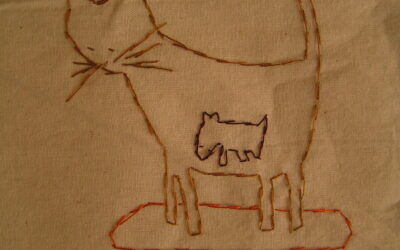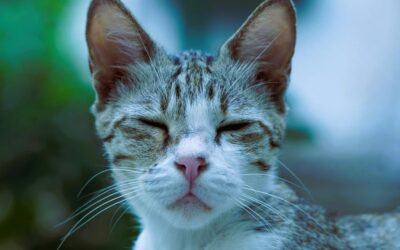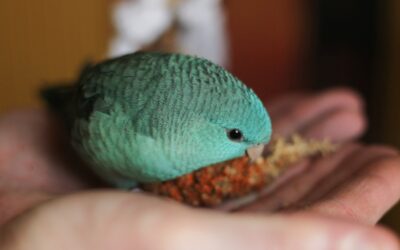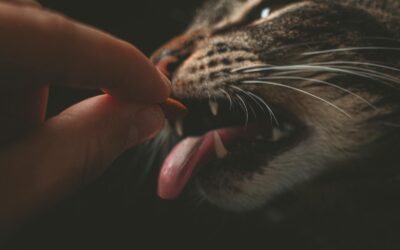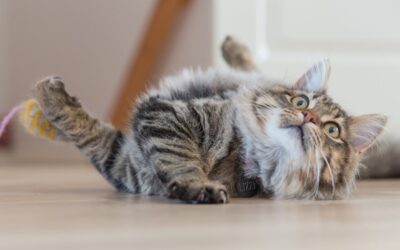When do cats stop growing?
Cats are fascinating creatures, with unique growth patterns that can leave many pet owners curious. Whether you’re a new kitten parent or a seasoned cat enthusiast, understanding when cats stop growing is crucial for providing appropriate care.
This blog post will explore the different growth stages of cats, the factors affecting their growth, and what to expect as your feline friend matures. We’ll also debunk common myths and offer insights into specific breeds, like the Maine Coon, known for their distinct growth patterns.

The Growth Stages of Cats
Cats, much like human babies, go through distinct growth stages. During the early months, kittens experience rapid growth as they transition from tiny newborns to playful youngsters. Most kittens start life quite small, but by the time they are a few weeks old, you can already notice significant changes in size and behavior. This early stage is critical for development, both physically and socially.
By the age of two to three months, kittens begin teething, replacing their baby teeth with adult teeth. This is a clear indicator that they are entering adolescence. At this point, their diet shifts from mother’s milk or kitten food to more substantial meals, setting the stage for future growth.
The Adolescent Phase
Between four and nine months of age, kittens experience a phase of notable growth, where they seem to change almost daily. This period is characterized by increased activity, exploration, and learning as kittens hone their hunting skills and social behaviors. During this time, both male and female cats might start to reach sexual maturity, although this can vary based on breed and individual health.
Reaching Adulthood
Most cats stop growing by 12 months of age, at which point they are considered adults. However, it’s important to note that while their growth in height and length may plateau, their weight may continue to fluctuate. Some cats, especially larger breeds like Maine Coons, can continue to grow past their first year, sometimes taking up to four years to reach full size.

Factors Influencing Cat Growth
There are a few factors that may influence cat growth rates:
Breed Differences
Different breeds grow at varying rates, with some reaching full maturity faster than others. Smaller breeds may stop growing sooner, while larger breeds like the Maine Coon may take longer to achieve their adult size. Understanding your cat’s breed can provide insight into their growth patterns and expected adult size.
Nutrition and Diet
A cat’s diet plays a significant role in its growth and overall well-being. High-quality cat food, specifically designed for the different life stages, ensures that your feline receives the necessary nutrients. Poor nutrition can lead to health issues and stunt growth, so it’s essential to choose a diet that supports your cat’s developmental needs.
Health and Genetics
Genetics significantly influence how cats grow and develop. Some felines naturally grow faster or larger due to inherited traits. Additionally, health issues or conditions can impact growth. Regular veterinary check-ups can help ensure that your cat is growing at a healthy rate and address any potential concerns early on.

Cat Breeds and Their Growth Patterns
Understanding the different growth patterns among various cat breeds can greatly enhance your knowledge about feline development. Here’s a look at some popular cat breeds and their general growth timelines:
- Maine Coon: Maine Coons are one of the largest domesticated cat breeds and can take up to 4 years to reach their full size. Known for their impressive size and fluffy tails, these cats grow slowly compared to other breeds, so patience is essential when raising Maine Coon cats.
- Ragdoll: Ragdolls are large and affectionate cats that typically reach maturity around 3 to 4 years of age. Their gentle and laid-back nature is complemented by their slow growth rate, resulting in a sturdy build and soft, semi-long fur that reflects their calm temperament.
- Siamese: Siamese cats usually reach full height by one year, but they continue to develop their muscular structure until they are about 2 to 3 years old. Their sleek and elegant appearance belies a strong physique, as they are known for their playful and active nature.
- Bengal: Bengal cats might achieve their adult weight by 1.5 to 2 years, though they can exhibit kitten-like energy and behavior well into their second year. Unlike some breeds that grow slowly, Bengals, with their striking spotted coats, demonstrate high levels of agility and activity as they mature.
- British Shorthair: British Shorthairs grow at a moderate pace, reaching full size by 3 to 5 years. Their robust and stocky build is characteristic of the breed, and they are known for their friendly and easygoing personalities, making them great companions for families.
- Abyssinian: Abyssinians are typically fully grown by around 2 years of age. These cats are known for their playful nature and distinctive ticked coat, and they exhibit a high energy level throughout their development, making them playful companions well into adulthood.
Understanding these differences in growth can help you better cater to the individual needs of your cat, providing the appropriate nutrition, exercise, and care tailored to their breed-specific characteristics.

Male vs. Female Growth Patterns
Male cats may grow differently than female cays. Keep reading below as we explain how:
Male Cats
Male cats often grow larger and heavier than their female counterparts. They typically have more muscle mass and broader body frames. You might notice that your male cat continues to fill out even after reaching his full height. This additional weight gain is normal and reflects their mature adult size.
Female Cats
Female cats tend to be smaller and more petite. Their growth usually stops sooner than males, and they often reach maturity slightly earlier. Despite their size differences, female cats are equally capable of achieving the same level of health and activity as males.’

Understanding Adult Cat Food Transition
Once your cat reaches approximately 12 months of age, it’s time to transition from kitten food to adult cat food. Adult cat food is formulated to meet the nutritional needs of grown cats, supporting their long-term health and vitality. Many brands, including Hill’s Pet Nutrition, offer a range of options tailored for adult cats.
Importance of Proper Nutrition
Balanced nutrition supports your cat’s immune system, maintains a healthy weight, and ensures overall well-being. Adult cat food provides essential vitamins, minerals, and proteins that help maintain healthy muscles and bones. Consult your veterinarian to determine the best food choice for your adult cat.
Special Considerations for Senior Cats
As cats age, their dietary needs change. Senior cats may require special formulations that address age-related health concerns, such as joint support or weight management. Transitioning to senior cat food around seven years of age can promote healthy aging and prolong your feline’s quality of life.

Behavioral and Social Maturity
Social maturity in cats doesn’t always coincide with physical maturity. While they may reach their full size by one year, many cats don’t fully mature behaviorally until two to four years of age. During this time, they develop more stable personalities, become less hyperactive, and often form stronger bonds with their human companions.
Understanding Changes in Behavior
Adult cats calm down compared to their younger selves. They may become more independent, less prone to mischief, and enjoy more leisurely activities. Understanding these behavioral shifts can help you provide the best environment and companionship for your adult cat.
The Role of Spaying and Neutering
Spaying or neutering your cat can influence their growth and behavior. These procedures are often performed around the time cats reach sexual maturity. Besides helping control the pet population, spaying and neutering can reduce aggressive behaviors and prevent certain health issues.
Common Myths About Cat Growth
Here are a few myths about cat growth:
Myth 1: All Cats Stop Growing at the Same Age
Contrary to popular belief, not all cats stop growing at the same age. Factors like breed, nutrition, and genetics play significant roles in determining growth duration. Larger breeds, like Maine Coons, can grow for several years beyond the typical age.
Myth 2: Cats Don’t Change After One Year
While cats may reach full size by one year, their emotional and behavioral development continues. Cats often become more emotionally mature and settled between two and four years old, adapting to their environment and social dynamics.
Myth 3: Size Determines Health
A cat’s size doesn’t necessarily correlate with their health. Both small and large cats can be equally healthy if provided with proper nutrition, exercise, and veterinary care. Focus on holistic well-being, rather than size alone, to ensure your cat thrives.

Maintaining Your Cat’s Well-being Throughout Life Stages
As pet owners, we have to maintain our cat’s health and wellbeing throughout their entire life. Below are just a few ways to do so:
Prioritizing Regular Veterinary Care
Routine veterinary visits play a crucial role in monitoring your cat’s growth and health. Regular check-ups can detect early signs of illness, ensure vaccinations are up to date, and provide valuable insights into your cat’s development.
Encouraging Physical Activity
Exercise is vital for maintaining a healthy weight and preventing obesity in cats. Engage your feline friend in interactive play, provide climbing structures, and encourage activities that stimulate their natural instincts. Regular exercise promotes physical fitness and mental stimulation.
Creating a Stimulating Environment
Cats thrive in environments that offer mental enrichment and stimulation. Provide toys, puzzles, and scratching posts to keep them engaged and prevent boredom. Create a safe outdoor space or consider walking your cat on a leash for supervised exploration.

Kate’s K9 Pet Care cares about the health and well-being of your cats and any other animals you may have. Check out our extensive range of pet care services!
Conclusion | When Do Cats Stop Growing?
In conclusion, understanding when cats stop growing involves recognizing the various factors that influence feline growth and development. From breed and nutrition to genetics and behavior, each aspect plays a crucial role in shaping your cat’s life stages. By prioritizing proper nutrition, regular veterinary care, and mental enrichment, you can ensure your feline companion remains healthy and happy throughout their life.
For those seeking further guidance, consulting with a veterinarian or animal behaviorist can provide valuable insights tailored to your cat’s unique needs. Remember, every cat is an individual, and supporting their growth and well-being requires a proactive and informed approach.
By staying informed and attentive to your cat’s changing needs, you’ll nurture a strong bond and provide the best care possible for your cherished feline friend.


